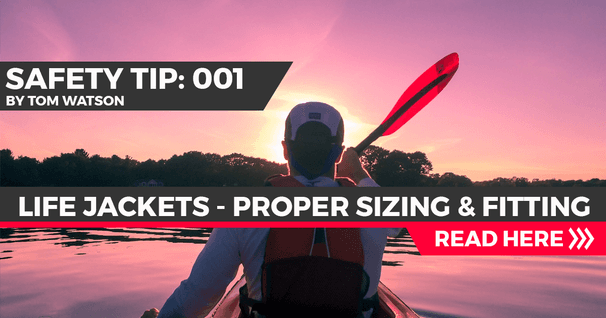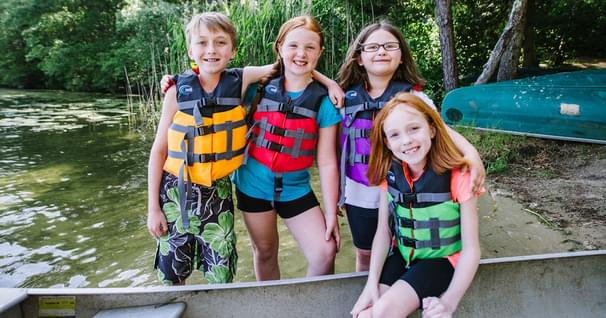Properly Sizing Children's Life Jackets
Life Jacket Selection And Fit
When it comes to ensuring a child's safety on the water, no piece of equipment is more vital than a life jacket. Children, however, are often apt to grab a life jacket based on its colors or style, rather than all-important function and fit. Here are some common fitting mistakes and how to correct them.
Selecting A Jacket That Is Too Large

The most common youth fitting mistake is selecting an adult jacket or a children's jacket that is too large. The signs are often obvious on land. Rather than fit snugly as intended, an oversized life jacket will fit sloppily. Closures may overlap. And the jacket may droop off the shoulders, hang loose at the armpits or fall below the waist. An oversized life jacket may be more obvious in the water. The jacket shoulders may ride up over the child's face and cheeks, interfere with their vision or breathing, even slip completely off.
Selecting A Jacket That Is Too Small

Again the signs on land should be obvious. The torso panels of a vest-style life jacket that is too small won't come together properly in the front. Straps will be stretched to their full length in order for buckles to snap together. And zippers, if offered, may not fully close. The tell-tale sign of a too small life jacket in the water is the child struggling to keep their head above the water's surface. a life jacket that is too small will fail to provide the buoyancy necessary to keep the child's weight afloat.
Start With Manufacturers Labeling

When selecting a life jacket, look first for manufacturers labeling, typically printed inside the jacket. Manufacturer’s labels indicate whether the lifejacket is designed for an adult or child, as well as designate recommended weight range and chest dimensions. Always choose a US Coast Guard approved life jacket. Coast Guard approval will be clearly visible on an interior label. Approved lifejackets have been tested to perform as indicated.
Perform A Fit Test

Try any life jacket on and verify it fits before heading to the water. With buckles or zipper secured, a properly fitting life jacket should be snug but comfortable. Once a properly sized lifejacket is selected, perform this simple test. Secure any closures, buckles, zippers, etc. Then have the child lift their arms overhead, like signaling a touchdown. An adult grabbing the jacket at the shoulders should not be able to pull the jacket up and over the child's cheeks. If the jacket does slide up, it may slip off or interfere with the wearer's ability to breathe while in the water. Double-check any life jackets fit by having the wearer get in the water. If a jacket rides up over the wearer's head or fails to adequately support their head above the water, look for an alternative fit or style. Remember, child or adult, a properly fitted life jacket should be snug, secure, and yet comfortable to encourage its wear. And wearing those lifejackets will ensure everyone in your crew is able to enjoy a fun, worry-free day on the water.
Check Out All Children's Life Jackets
Related Articles
Adhering to the fundamental safety rule that a lifejacket should always be worn when out on the water,…
Of all the safety gear used by those who enjoy on-water sports, none should be scrutinized more than the…
This Point-Of-View account of the decisions made prior to an outing visibly shows the importance of…
This Point Of View account shows the importance of choosing the right clothing when paddling. No matter…



